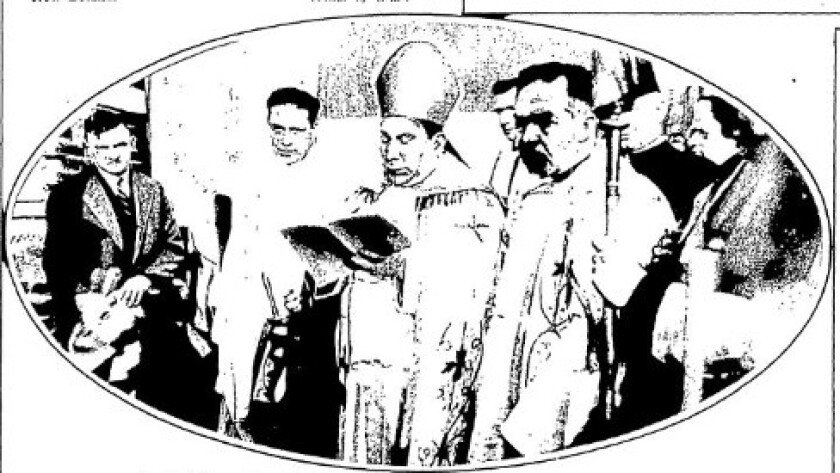As published in the Chicago Daily News, sister publication of the Chicago Sun-Times:
When the first wave of Mexican Americans arrived in Chicago to stay during World War I, they settled in neighborhoods looking to hire workers to replace those who’d gone off to fight. Many headed for Back of the Yards, near the meatpacking industry, while others found work in the steel mills and settled in South Chicago.
In 1923, Fr. William Kane, S.J., began ministering to the predominately Catholic immigrants, according to a Facebook page managed by the church. The following year, a small church was built at 9024 S. Mackinaw Ave., and Claretian priest Fr. John Maiztegui was named pastor, followed by Fr. James Tort, C.M.F., a year later. In 1926, the parish purchased land at 91st and Brandon where a new church would be constructed.
The Chicago Daily News devoted little coverage to the church’s construction, but a photographer did attend the cornerstone laying. The photo below ran on April 14, 1928.
The caption read: “South Chicago church and Mexican center dedicated by bishop of Tabasco. Scene at the laying of the cornerstone of the new edifice erected at E. 91st street and Burley avenue by the parish of Our Lady of Guadalupe. The Rt.-Rev. Pascual Diaz, who was in charge, has resided in New York since the exodus of Catholic clergymen from Mexico.”
One year before the construction of the church finished up, the Claretians established the National Shrine of St. Jude within the church, according to the St. Jude League. Fr. Tort, a devoted follower of the patron saint of hope, prayed to St. Jude nightly, asking for him to help the parishioners.
On Sept. 30, 1930, Our Lady of Guadalupe held a dedication ceremony, officially welcoming worshippers and becoming the first Mexican American parish in the city. The church said it served about 8,000 people at the time.
No reporters covered the dedication ceremony, but Our Lady found its way into the paper many times over the next few years.
Two years after the ceremony, congregates out of work decided to add some color to their new parish. While their pastor was serving in Panama, a group of men — all out of work from the mills because of the Great Depression — picked up brushes and painted the interior of the church. The ceiling had been painted blue, a Feb. 5, 1932 article stated, and “the walls, harmoniously blended, with border trims of delicate design and intricate scrollwork.”
During the Century of Progress, children from the parish, trained by Fr. Tort, performed on Mexico Day, a July 20, 1934 article stated.
The church also became a popular house of worship for Chicago police officers who were also members of the St. Jude League. In addition to the local parishioners, about 4,000 officers attended mass at the shrine.
“They come to this church, located far away from the excitement and turmoil of the city’s downtown district, to place themselves under the protection of St. Jude, patron saint of all who lead dangerous lives,” a Sept. 20, 1935 article said.
In the summer of June 1936, Fr. Tort transferred to a parish out in California after nine years with Our Lady. “He has been ill for the last few months,” a June 27 article explained, “and it was understood that the transfer was made because the California climate would benefit his health.”
The church still stands today in South Chicago and continues to serve its local Hispanic residents, but many people from other neighborhoods come to worship as well.







